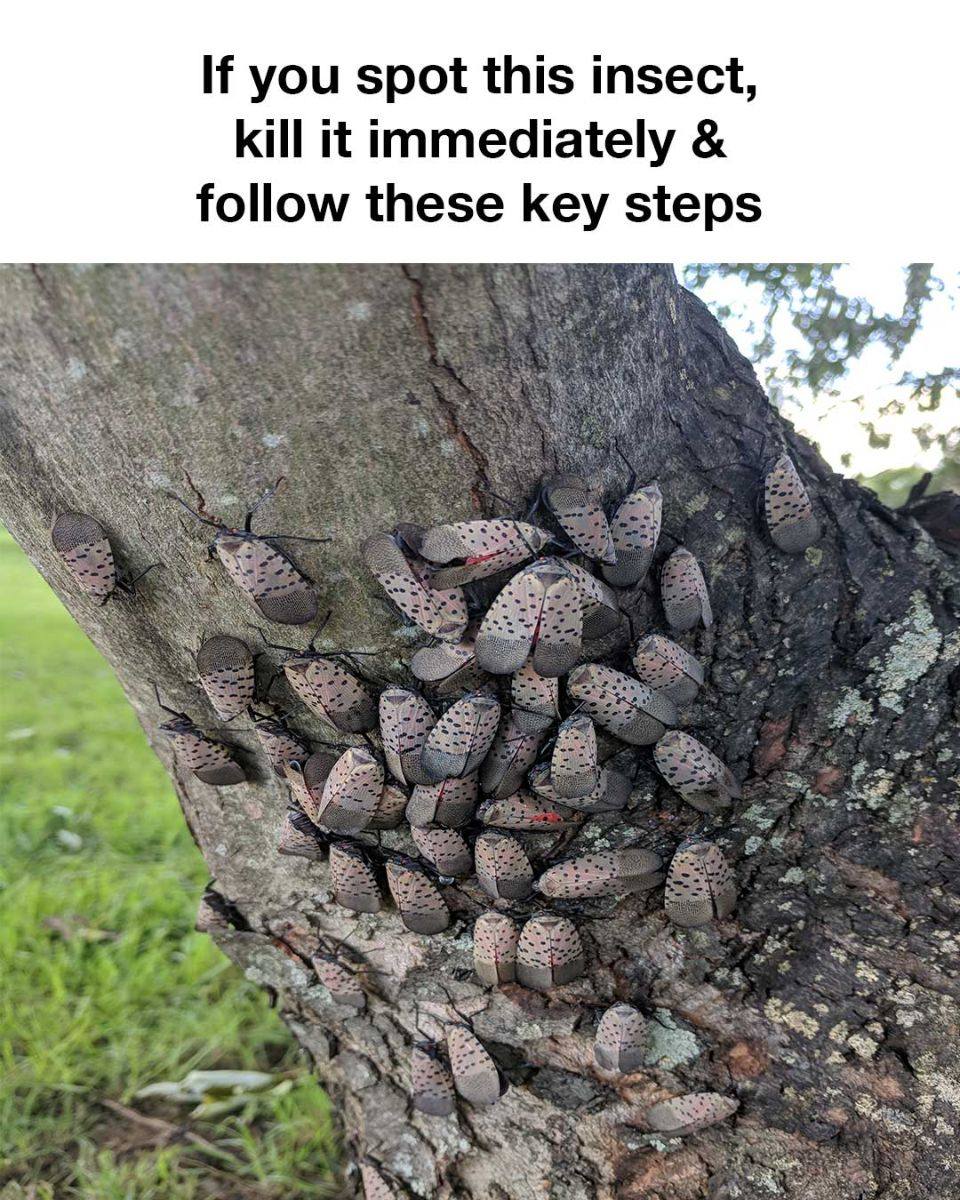In recent years, the spotted lanternfly (Lycorma delicatula) has become a significant concern across several U.S. states due to its invasive nature and the extensive damage it inflicts on agriculture and the environment. Here’s what you need to know about this pest, why controlling its population is crucial, and how you can help safely manage its spread.
What Is the Spotted Lanternfly?
The spotted lanternfly is an invasive planthopper native to China, India, and Vietnam. It was first detected in the United States in Pennsylvania in 2014 and has since spread to other states, including New Jersey, Virginia, and Ohio. This pest feeds on the sap of over 70 plant species, such as grapes, apples, pines, and maples, making it a significant threat to U.S. agriculture and forestry.
Adult lanternflies are about 1 inch long and half an inch wide, with distinctive wings. Their forewings are gray with black spots, and their hind wings feature red and black patches with a white band. In their nymph stages, they start as black with white spots, transition to red, and then mature into adults.
Why Is It Important to Control the Spotted Lanternfly?
- Economic Damage: The spotted lanternfly poses a severe threat to the viticulture industry and other agricultural sectors. Their feeding activity stresses plants, making them more susceptible to diseases and potentially leading to significant crop yield reductions.
- Environmental Impact: Lanternflies can also damage or kill native trees, disrupting local ecosystems and biodiversity.
- Residential Nuisance: Lanternflies excrete a sticky substance called honeydew, which attracts bees and wasps and can lead to the growth of sooty mold. This mold can damage plants and create sticky, black residues on patios, decks, and vehicles.
How to Safely Control the Spotted Lanternfly
see continuation on next page

